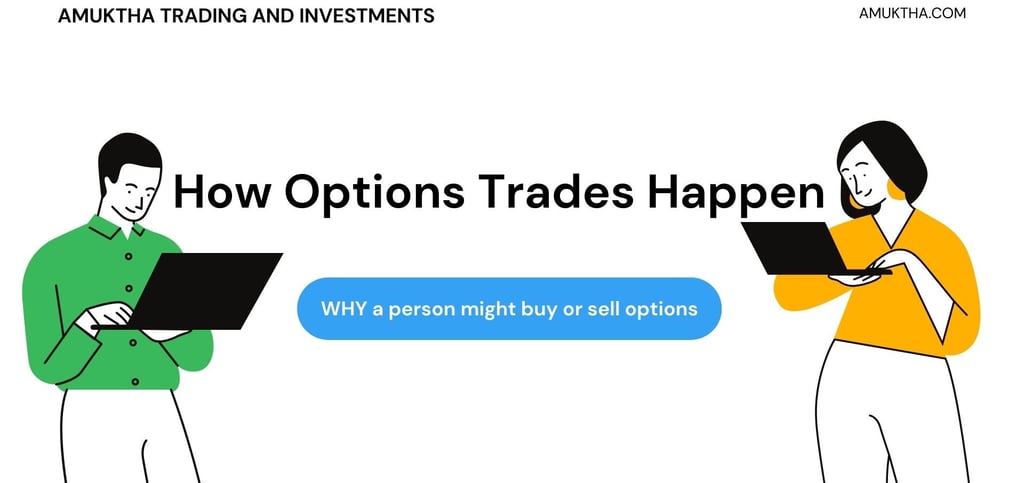

How Options Trades Happen
Options trading can seem complex at first glance, but once you break it down, it becomes more manageable. Here’s a step-by-step overview of how options trades typically happen:
1. Understanding the Options Basics
Before diving into trading, it's crucial to understand what options are. An option is a financial derivative that gives the trader the right, but not the obligation, to buy or sell an underlying asset (like a stock) at a predetermined price (the strike price) before a certain date (the expiration date).
There are two main types of options:
Call Options: Give the holder the right to buy the underlying asset.
Put Options: Give the holder the right to sell the underlying asset.
2. Setting Up an Account
To trade options, you need a brokerage account that supports options trading. This usually requires completing an application that assesses your trading experience, financial situation, and risk tolerance.
3. Research and Strategy
Before placing a trade, traders analyze the underlying asset, market conditions, and their own financial goals. Common strategies include:
Covered Call: Holding the underlying stock while selling a call option.
Protective Put: Owning the underlying stock and buying a put option for downside protection.
Straddle: Buying both a call and a put option at the same strike price and expiration date, betting on significant price movement.
4. Placing the Trade
Once you’ve decided on a strategy, you place the trade through your brokerage’s trading platform. Here’s a simplified process:
Select the Underlying Asset: Choose the stock or other asset you’re interested in.
Choose the Option Type: Decide whether you want to buy or sell a call or put option.
Set the Strike Price: Determine the price at which you’ll buy or sell the underlying asset.
Pick the Expiration Date: Select when the option will expire.
Specify the Number of Contracts: Options are typically traded in contracts, where each contract represents 100 shares of the underlying asset.
5. Executing the Trade
After placing the order, it’s submitted to the options market. Orders are matched with other traders’ orders through an exchange or an electronic trading system. If the trade is executed, you'll receive confirmation, and the trade will appear in your account.
6. Monitoring and Managing
Once the trade is live, you need to monitor its performance. Depending on market conditions and your strategy, you might need to make adjustments. This could involve:
Selling the Option: If it’s profitable or you want to exit early.
Exercising the Option: If you want to buy or sell the underlying asset at the strike price.
Letting It Expire: If the option is out-of-the-money and worthless.
7. Closing the Trade
To close an options position, you typically take an offsetting action:
Sell the Option: If you initially bought it, selling it closes the position.
Buy the Option: If you initially sold it, buying it back closes the position.
8. Settlement
Options trades are settled through the clearinghouse, which ensures that both parties fulfill their obligations. If you exercised an option, the underlying asset is either bought or sold at the strike price, and your account is adjusted accordingly.
9. Review and Learn
After closing the trade, it’s beneficial to review the results and learn from the experience. Analyzing what worked and what didn’t helps improve future trading strategies.
Options trading involves a range of strategies and complexities, so it’s often recommended to start with basic trades and gradually explore more advanced strategies as you gain experience and confidence.
Disclaimer:- Trading and Investments in the securities market are subject to market risk, and read all the related documents carefully before investing. The content is for informational purposes only and should not be construed as investment advice. Always consult with a qualified financial professional before making any trading decisions.
